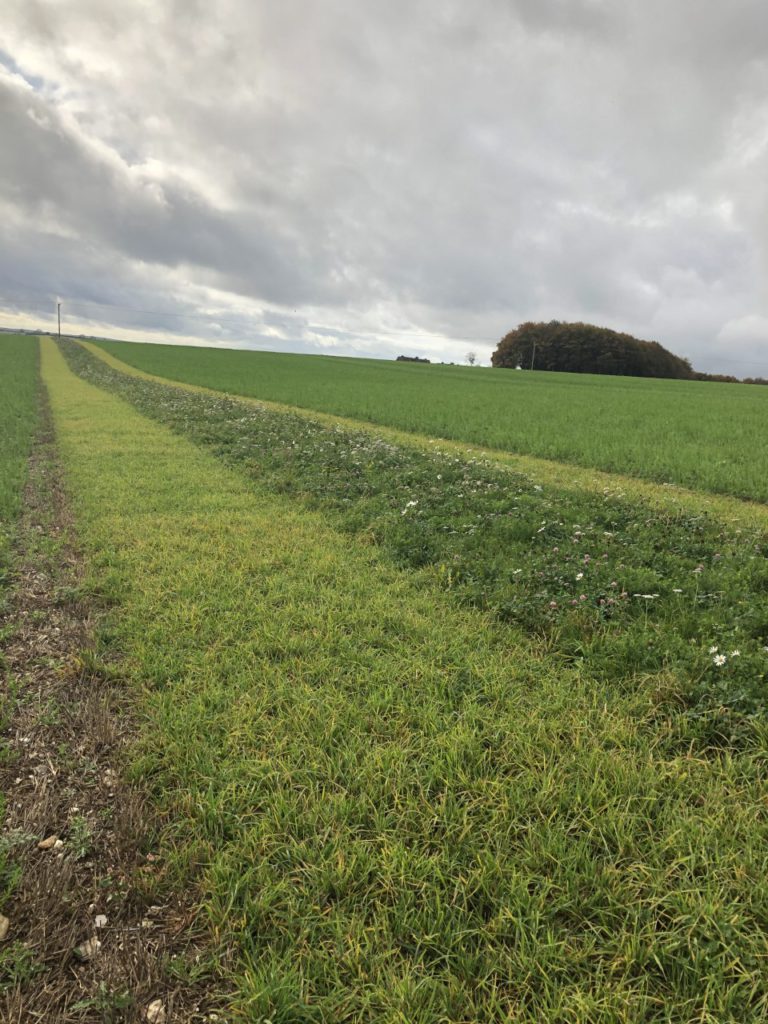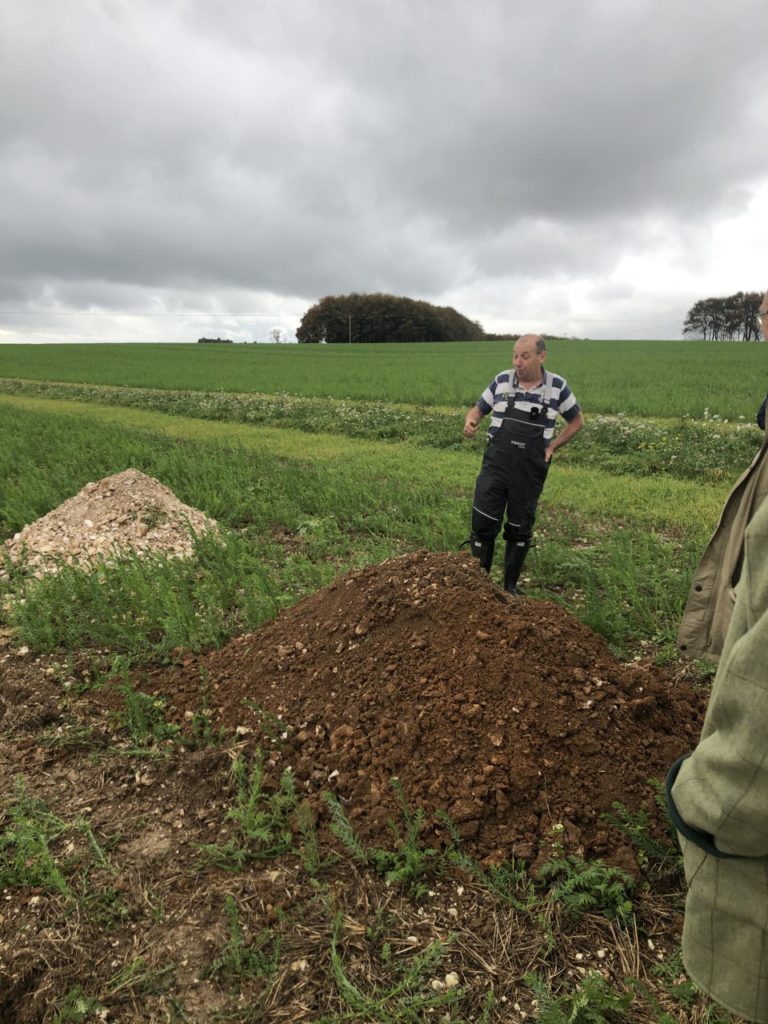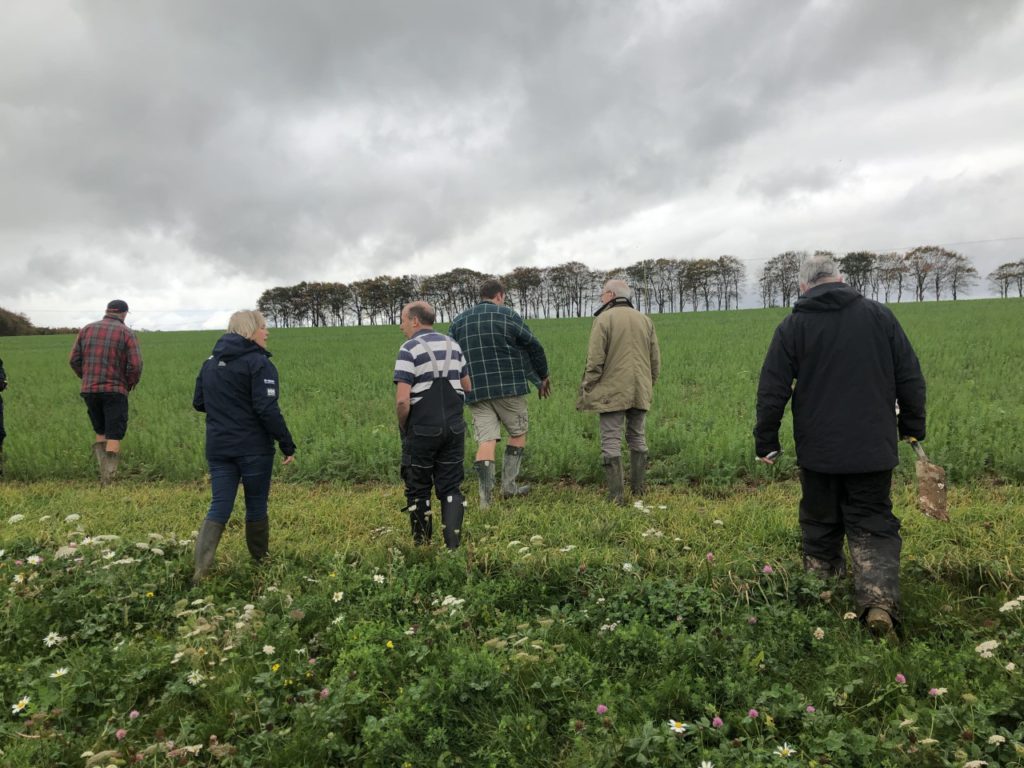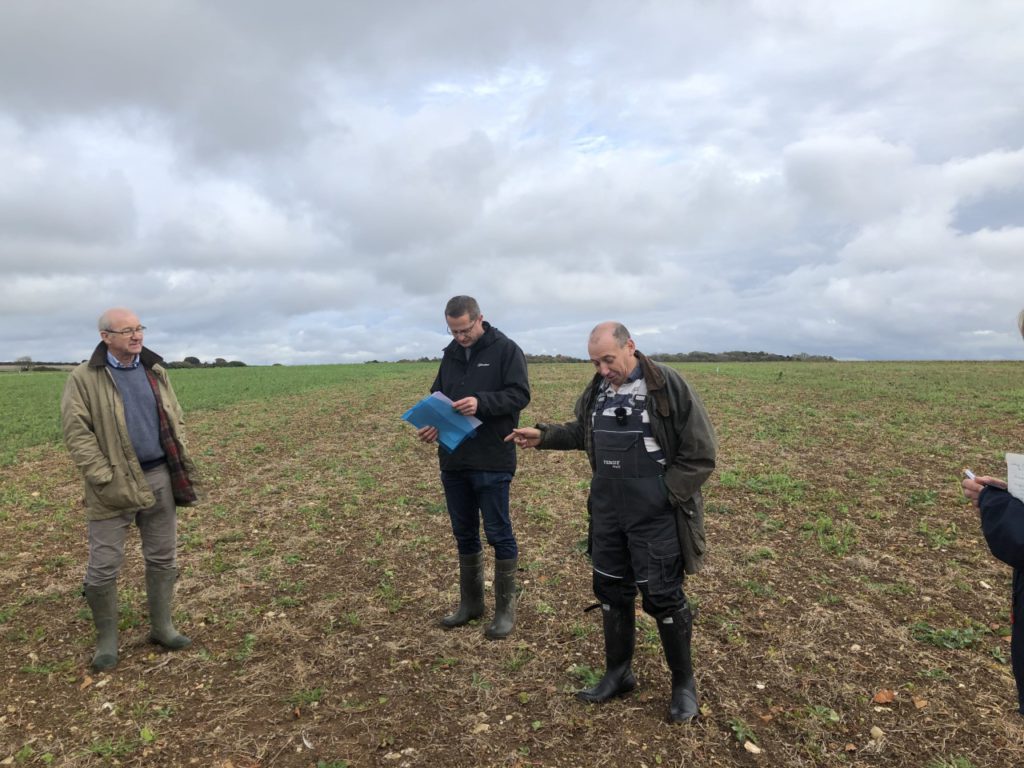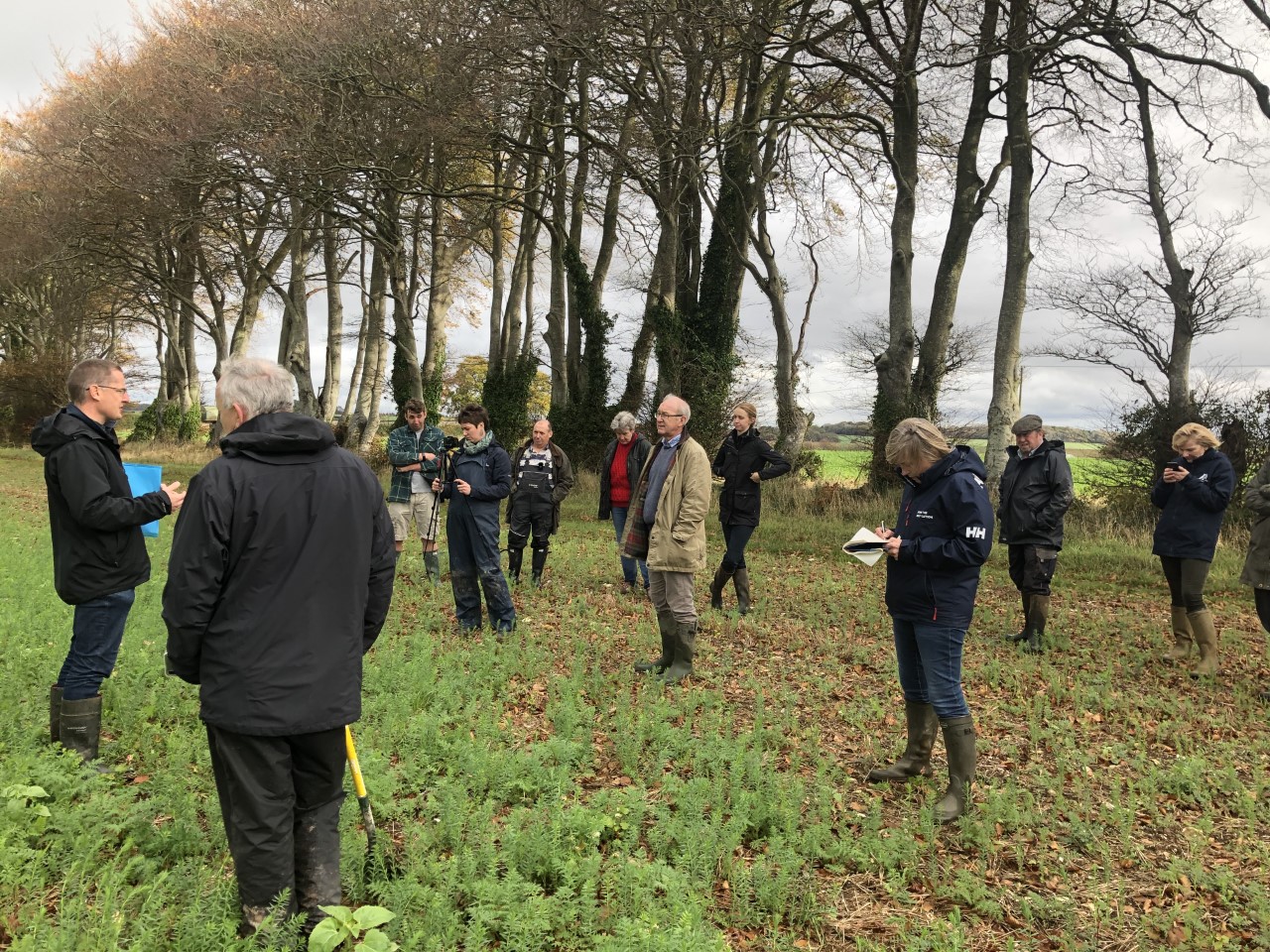
Learn more about why John Martin was awarded runner up in this year’s competition.
John farms 300 acres in Dorset on an all arable rotation with two thirds of the farm in spring cropping. The farm was a former dairy farm until 2000, and since then the overarching aim of the management has been to keep the soil status in good health. John’s farm is situated in an area with a high degree of designations on it, being within a Class 1 Soil Protection Zone, an NVZ and the Poole Harbour Catchment, meaning that there has been a large focus on efficient nutrient use, especially on nitrogen.
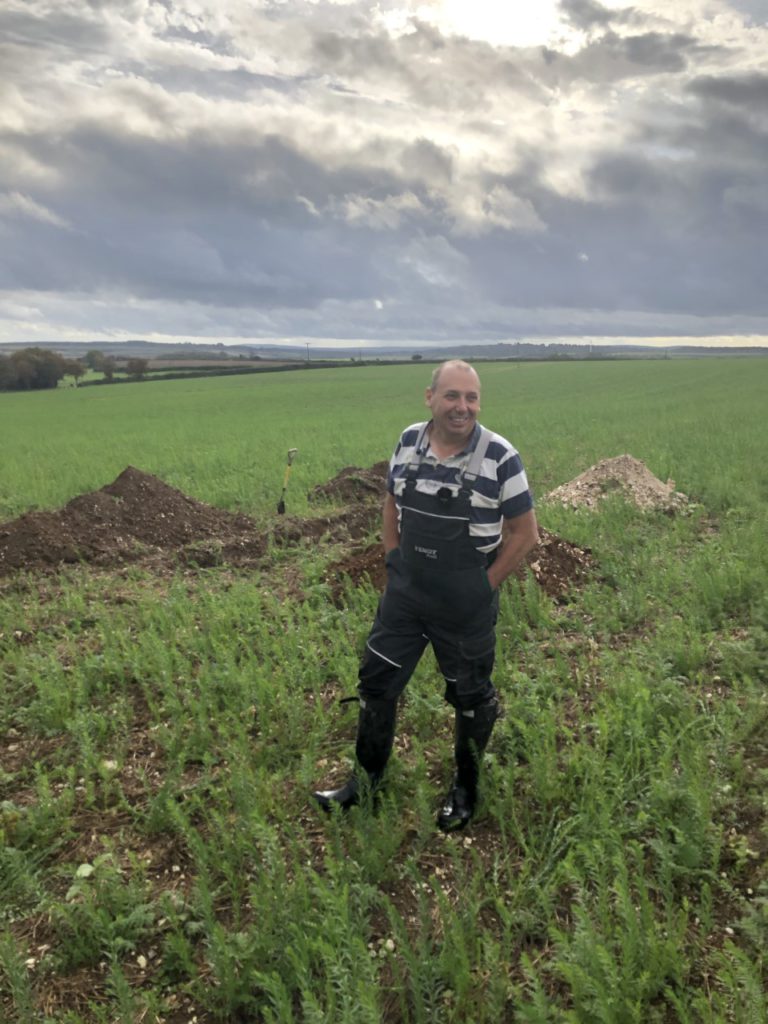
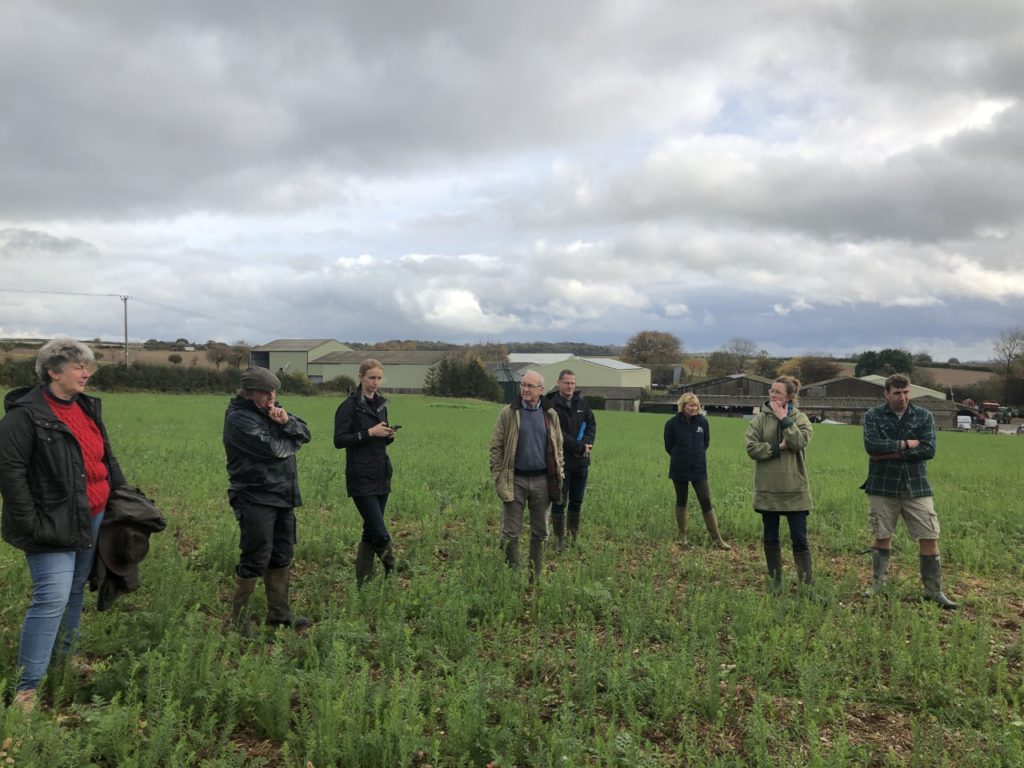
A key strategy employed on the farm to boost soil health and also to help capture nutrients has been the use of cover cropping. All of the land that is in spring crops has a cover crop before it, and John has been experimenting with increasing the diversity of the mix. The mix now includes sunflowers, buckwheat, phacelia, linseed, and various clovers to ensure that the soil biology have a diverse diet.
John explains:
It’s like taking a coach party of people to a fish and chip shop, some will want fish, some sausage and some pie and chips. All of the soil bugs bring something to the party and are all important, so we need to provide a diverse food supply for them so they can do their jobs.” Nothing is set in stone however and everything is flexible. The farm grows a high proportion of spring cropping, which allows the cover crops to be utilised fully. John explains “We harvest sunshine for 6 months of the year to feed the combine (and the bank manager), we can spend the other 6 months feeding the soil.
The diversity of cover crops grown provide lots of roots to feed the soil microbes and rapid breakdown of Nitrogen release for the spring.
The group then moved onto look at some flower strips which John has planted in one of his fields through the ASSIST project. The overarching aim of these was to encourage biodiversity into the fields rather than just being round the edges, and also to allow the farmer to move away from insecticides and use natural pest management. The strips are 8m wide with 2m of tussocky grasses framing the flowers in the middle. John is seeing the benefits of these strips, but is learning as the project develops.
The first year we just planted some annual strips of flowers, but it was a little bit like a drive through McDonalds; so we then replaced them with permanent strips that provide food and habitat throughout the year.
The strips were established at the end of March with a Vaderstaad Drill. and were cut every 8 days. John has these strips in a variety of fields and has three strips per field. Next year the plan is to cut them once or twice.
John is farming on chalk soils and enjoys the challenges that this soil type can bring. He first started looking at soils in the 80s, digging his first soil pit in 1985. This then prompted a move towards bigger, low ground pressure tyres and focussing on axle weights of machinery to minimise compaction. There is always a spade in the tractor allowing John to assess the structure of the soil at two key periods in the year; in winter when the soils are wet, to assess how the drainage is doing, and then after cultivation to see whether the machine has achieved its goal.
The chalk soils mean that John is keen to build resilience in his soils to aid water retention. A key strategy is focussing on returning organic matter to the soil to build humus. All of the crop residues are chopped and returned to the fields and 75% of the farm is cover cropped to ensure that there is something growing all year round. When John started his transition to enhanced soil management he took some baseline soil samples.
He explains
“We tested fields for organic matter and they weren’t bad, but we wanted to get another 1 – 1.5%. If we can get hold of that then we’ve got more resilient soils to do spring cropping. We can tell that we are moving in the right direction as the soils are much more springy. That elasticity is coming from the humus and the soils are developing the resilience to carry us through.”
The farm is situated in a highly protected area for water qualiy. The farm sits above a Wessex Water pumping station and as such Nitrogen is limited and cover crops are always grown. John’s next step is looking at how to cut his Nitrogen back on his spring barley and is making good progress on its reduction. “We’ve got to make more out of Nitrogen,” John explains, “which is all about looking at holding onto nutrients over the winter and then using it efficiently during the growing season.”
John has been running various trials on the farm, including one with Wessex Water looking at cover crops after peas, to try and find a way of harvesting the Nitrogen in the soil after peas. After the peas were harvested, a cover crop was drilled and when the cover crop was up and away in mid November the next crop wsas direct drilled into it. The cover crop was sprayed out in the spring. Although this approach led to a 20% yield penalty the leaching from the porous pots (which Wessex Water had installed to look at leaching rates) dropped from 67% to 4%. This trial is being run again this year with different mixes of cover crops that are established and terminated in different ways to look at the optimal method which effectively captures Nitrogen but provides a good yield.
John’s focus on his soils is linked to his overarching aims for the farm which is to develop a more sustainable way of farming with consistent yields. “You never stop learning when you are focussed on the soil” John explains, “and it’s a fascinating adventure.”
Thank you to John and his family for a brilliant walk.

